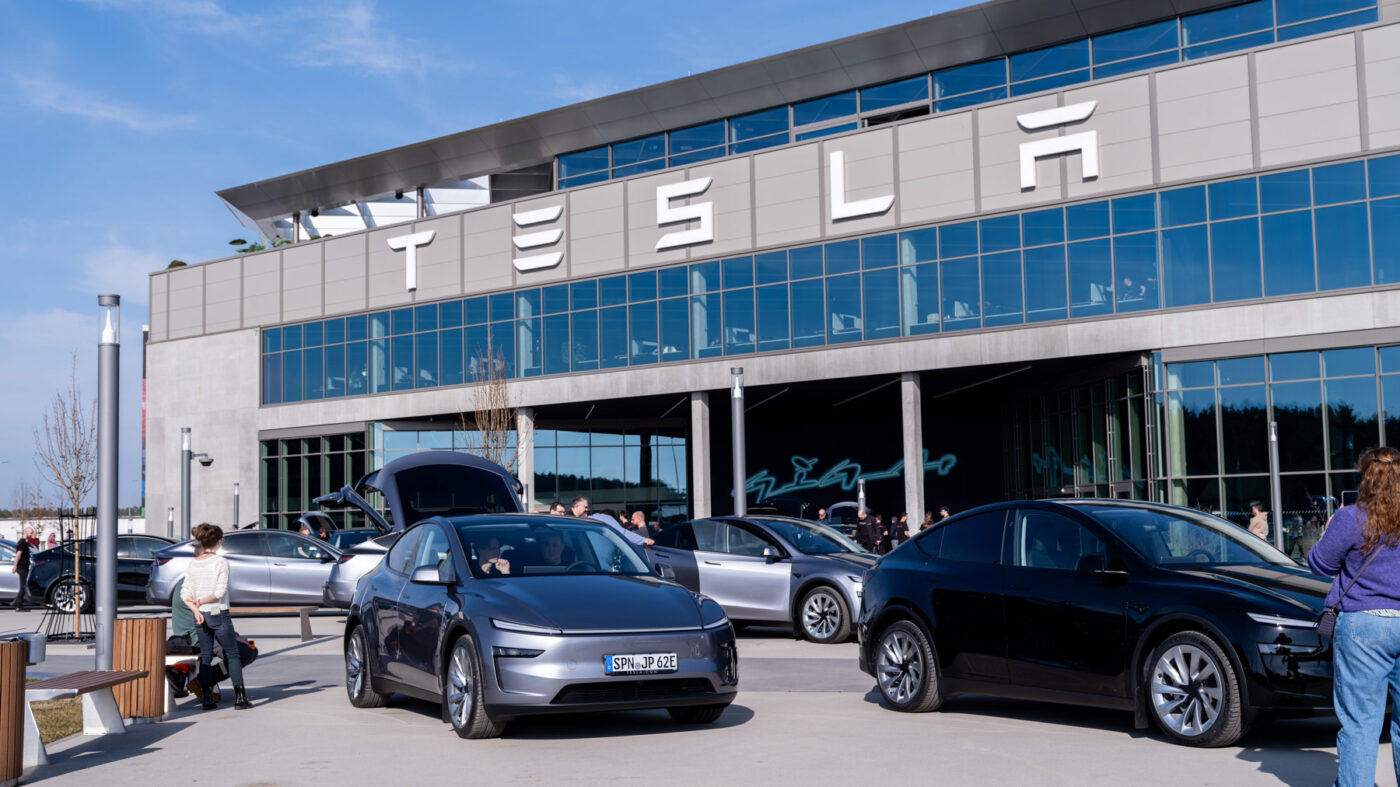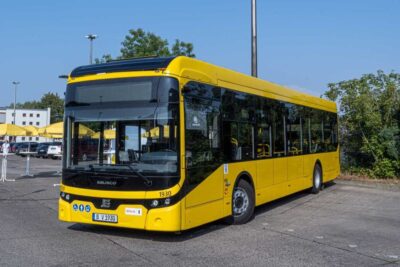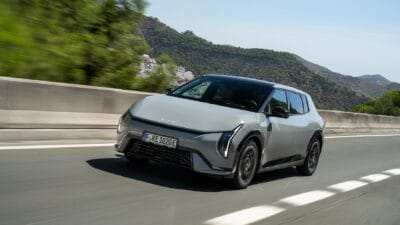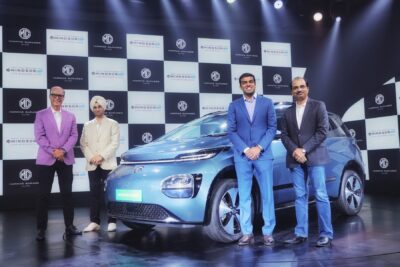Tesla’s profit stays below last year’s figure
The first quarter of 2025 was bad for Tesla – and the second only slightly better. At 16.66 billion dollars, revenue from vehicle sales is down 16 per cent compared to the same period last year. For the segment ‘Energy generation and storage’, i.e. solar roofs and stationary storage systems, revenue fell by seven per cent over the year and was almost constant compared to Q1 2025. Only the ‘Services and other revenues’ division increased by 17 per cent to $3.05 billion.
That clearly affected the bottom line, with total revenues down 12 per cent at 22.5 billion dollars for the period from the beginning of April to the end of June.
The company’s net income is also down compared to last year. The manufacturer earned 1.17 billion dollars in the last quarter, 16 per cent less than in the previous year. That is at least better than the 71 per cent slump in Q1, but it also means that a new and improved Model Y, which has been on sale since March, was not enough to turn the tide.
These figures do not come as a huge surprise. The EV maker already published its production and delivery figures at the beginning of the month. Between April and June, the company produced 410,244 electric cars and delivered 384,122. That translates to a 13.5 per cent drop YoY, as Tesla delivered 443,956 electric vehicles in the second quarter of 2024.
Operating margin increases slightly to early 2025
According to Tesla, it still has an operating margin of 4.1 per cent. That may be much better than the 2.1 per cent reported for the previous quarter, however, from April to June 2024, the US carmaker still had an operating margin of 6.3 per cent.
To compare: in 2022, this figure was already at 19 per cent, most recently, it fluctuated roughly between 5 and 11 per cent. However, Tesla has been cutting its profitability in favour of sales for some time now. In the fourth quarter of 2024, the company still achieved a record of almost 500,000 vehicles delivered, but apparently discounted them so heavily that revenue from the car business plummeted.
In addition to vehicle deliveries, revenue from regulatory credits, i.e. from the sale of CO2 certificates, also declined – at 439 million dollars, it was lower than in the previous four quarters. Average selling prices for storage systems also fell – although installed capacity increased slightly from 9.4 to 9.6 GWh. Tesla cites lower costs per vehicle and lower restructuring costs as positive effects.
New models, new markets, less subisidies
Despite these challenges, Tesla had cash and cash equivalents totalling $36.8 billion at the end of the quarter. That represents an increase of 20% year-on-year, although the amount fell slightly by 0.2 billion dollars compared to the previous quarter.
And the carmaker seems ready to turn things around, as it will add a new model to the lineup. “We continue to expand our vehicle offering, including first builds of a more affordable model in June, with volume production planned for the second half of 2025,” Tesla states in its earnings call, adding that it also continues to put its Cybercab pickup and all-electric Semi truck on the road, “both slated for volume production in 2026.”
Tesla is not yet giving a name, design, technical data or the factory – it would also be too disdainful to hide this in the PDF of a quarterly report. There will probably be a larger event – similar to the ‘We, Robot’ event last year – to unveil the new Tesla model to the public. The small teaser in the quarterly report will have to suffice for the time being.
Editor’s note: In the investor call that followed, Elon Musk did comment further on the more affordable model. You can read his statements here.
Moreover, the US company just recently launched its Model Y in India and will start delivering first vehicles there in September. It remains to be seen what effect that will have on the prediction and delivery figures, and of course Tesla’s revenue and net income, in the next two quarters. What is known is that Tesla is importing the new Model Y as a completely built-up unit (CBU) from Gigafactory Shanghai in China and has no immediate plans to localise it in India.
As for the new models themselves, Tesla is keeping a low profile. Even in the usual list of individual plant capacities, the company does not reveal where the vehicles will be built. The largest Tesla plant is still Giga Shanghai with a capacity of over 950,000 vehicles. “Gigafactory Shanghai remains our main export hub and continues to support greater market expansion. We achieved record delivery volumes in South Korea, Malaysia, the Philippines and Singapore,” Tesla states.
In terms of capacity, the next factory on the list is Fremont (100,000 Model S/X and over 550,000 Model 3/Y) and Giga Berlin with over 375,000 Model Ys, on a par with Giga Texas, where the production capacity is split between 250,000 Model Ys and 125,000 Cybertrucks. It is not clear yet where the upcoming Roadster will be built, but Tesla already lists it in the “Current Installed Annual Vehicle Capacity” tally.
Focus continues to shift
Tesla emphasises that on top of vehicle sales and its energy business, it has its eye on another business: robots and autonomous vehicles. “Q2 2025 was a seminal point in Tesla’s history: the beginning of our transition from leading the electric vehicle and renewable energy industries to also becoming a leader in AI, robotics and related services,” that carmaker states right at the beginning of its Q2/2025 update. And later: “While we continue to execute on innovations to reduce the cost of manufacturing and operations, over time, we expect our hardware-related profits to be accompanied by an acceleration of AI, software and fleet-based profits.”
One milestone was the start of the company’s Robotaxi service in Austin in June. Right now, the service does not yet deploy Tesla’s Cybercab, but a handful of Model Ys. Plus, although the driver’s seat is empty, there is still a safety driver on board. Nevertheless, the carmaker appears to be looking to expand the service to California and Arizona.
“We will further improve and expand the service (more vehicles covering a larger area, eventually without a safety rider) while testing in other U.S. cities in anticipation of additional launches,” Tesla states. “Our efforts to refine the Robotaxi offering in Austin are not location-specific and will allow us to scale to other cities quickly with marginal investment.”
Tesla to produce own LFP cells this year
Tesla isn’t just talking about trendy future topics, but also about making its supply chains more resilient. The company says cathode production and its lithium refinery remain on track to start operations later this year. In 2025, Tesla also plans to roll out its first in-house LFP cells off the production line – though initially not for its cars or the Semi, but for stationary storage systems. Who knows which battery cells the new, more affordable Tesla will use?
Even though little is known about the new model, one thing seems certain: the upcoming Tesla will be compatible with the company’s Superchargers. The fast-charging network has continued to grow, expanding by 18 per cent year-on-year – from just under 60,000 Supercharger stalls at the end of June 2024 to now 70,228 charging points. These are spread across 7,377 locations (+14 per cent). This growth has also contributed to increased revenue in Tesla’s service division.
Still no guidance for the current year
Tesla’s Q2 report has halted the slump seen in Q1, but it hasn’t dispelled all doubts about the company’s outlook. Although Tesla had promised a forecast for this year – missing from the Q1 report – it has again failed to provide any concrete sales figures. “It is difficult to measure the impacts of shifting global trade and fiscal policies on the automotive and energy supply chains, our cost structure and demand for durable goods and related services. While we are making prudent investments that will set up both our vehicle and energy businesses for growth, the actual results will depend on a variety of factors, including the broader macroeconomic environment, the rate of acceleration of our autonomy efforts and production ramp at our factories,” the company says about its expected volume.
This statement will likely polarise opinion once again. Some will say it’s the only sensible approach in such uncertain times, avoiding concrete targets that media and markets could latch onto. Others will call it aimless and lacking direction.
Recent analyst estimates pointed to 1.6 million vehicles this year, about ten per cent down on 2024. But even that would require a significant boost in output over the second half of the year, as Tesla has only recorded around 750,000 vehicles in its books at the halfway mark.





0 Comments